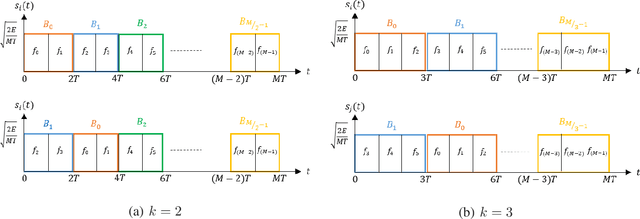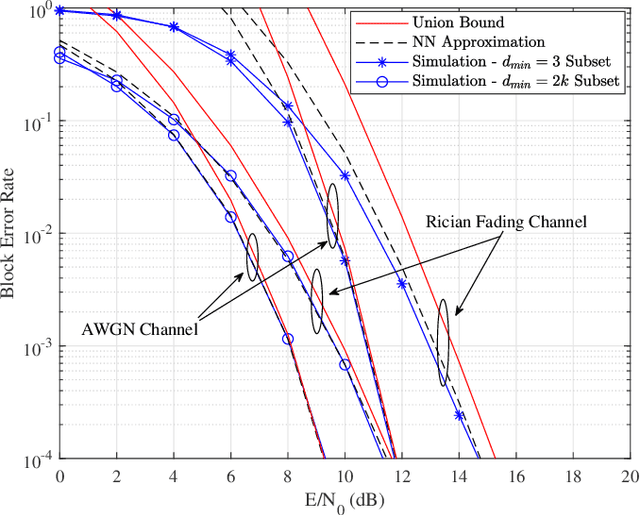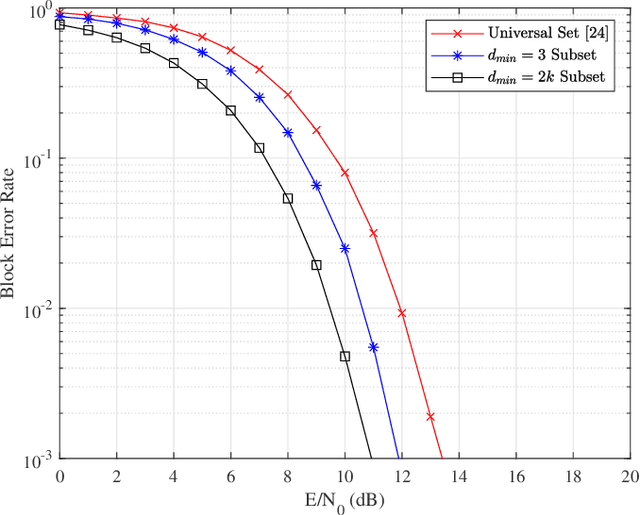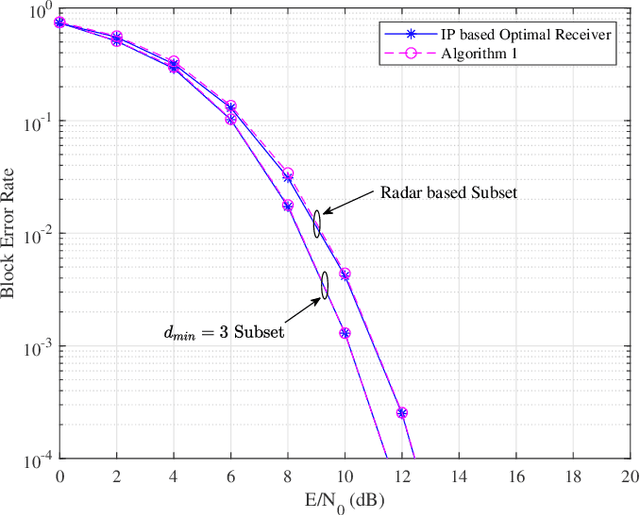Shalanika Dayarathna
OTFS based Joint Radar and Communication: Signal Analysis using the Ambiguity Function
Oct 07, 2023Abstract:Orthogonal time frequency space (OTFS) modulation has recently been identified as a suitable waveform for joint radar and communication systems. Focusing on the effect of data modulation on the radar sensing performance, we derive the ambiguity function (AF) of the OTFS waveform and characterize the radar global accuracy. We evaluate the behavior of the AF with respect to the distribution of the modulated data and derive an accurate approximation for the mean and variance of the AF, thus, approximating its distribution by a Rice distribution. Finally, we evaluate the global radar performance of the OTFS waveform with the OFDM waveform.
Performance Analysis of Relay Selection Schemes in Multi-Hop Decode-and-Forward Networks
Aug 16, 2023Abstract:This paper analyses the data rate achieved by various relay selection schemes in a single-user multi-hop relay network with decode-and-forward (DF) relaying. While the single-user relay selection problem is well studied in the literature, research on achievable rate maximization is limited to dual-hop networks and multi-hop networks with a single relay per hop. We fill this important gap by focusing on achievable rate maximization in multi-hop, multi-relay networks. First, we consider optimal relay selection and obtain two approximations to the achievable rate. Next, we consider three existing sub-optimal relay selection strategies namely hop-by-hop, ad-hoc and block-by-block relay selection and obtain exact expressions for the achievable rate under each of these strategies. We also extend the sliding window based relay selection to the DF relay network and derive an approximation to the achievable rate. Further, we investigate the impact of window size in sliding window based relay selection and show that a window size of three is sufficient to achieve most of the possible performance gains. Finally, we extend this analysis to a noise limited multi-user network where the number of available relay nodes is large compared to the number of users and derive approximations to the achievable sum-rate.
Frequency Permutation Subsets for Joint Radar and Communication
Jul 21, 2022



Abstract:This paper focuses on waveform design for joint radar and communication systems and presents a new subset selection process to improve the communication error rate performance and global accuracy of radar sensing of the random stepped frequency permutation waveform. An optimal communication receiver based on integer programming is proposed to handle any subset of permutations followed by a more efficient sub-optimal receiver based on the Hungarian algorithm. Considering optimum maximum likelihood detection, the block error rate is analyzed under both additive white Gaussian noise and correlated Rician fading. We propose two methods to select a permutation subset with an improved block error rate and an efficient encoding scheme to map the information symbols to selected permutations under these subsets. From the radar perspective, the ambiguity function is analyzed with regards to the local and the global accuracy of target detection. Furthermore, a subset selection method to reduce the maximum sidelobe height is proposed by extending the properties of Costas arrays. Finally, the process of remapping the frequency tones to the symbol set used to generate permutations is introduced as a method to improve both the communication and radar performances of the selected permutation subset.
Sum-Rate Optimal Relay Selection and Power Control in Multi-Hop Networks
May 19, 2022



Abstract:In this paper, we focus on the achievable sum-rate optimization problem of a multi-user, multi-hop relay network. We analyze the joint relay selection and power control in the presence of interference such that the achievable sum-rate is maximized. First, we evaluate the achievable sum-rate under five relay selection strategies when the transmit power is fixed. We show that the dynamic programming based max-min relay selection with the objective of maximizing the minimum signal-to-noise-ratio results in the highest achievable sum-rate gain for larger networks. Next, we combine the relay selection problem using the max-min relay selection and the power control problem using a tight lower bound approximation and propose a novel iterative algorithm, which maximizes the achievable sum-rate. We also provide a comprehensive comparison of the proposed algorithm with respect to existing resource allocation techniques, and observe that our proposed algorithm provides significant sum-rate gains. Finally, we prove that for the special case of two-user networks, binary power allocation is optimum for at least two transmitting nodes. Extensive numerical examples are provided to illustrate the accuracy of our results.
Optimal Routing for Multi-user Multi-hop Relay Networks via Dynamic Programming
Mar 01, 2022



Abstract:In this paper, we study the relay selection problem in multi-user, multi-hop relay networks with the objective of minimizing the maximum outage probability across all users. When only one user is present, it is well known that the optimal relay selection problem can be solved efficiently via dynamic programming. This solution breaks down in the multi-user scenario due to dependence between users. We resolve this challenge using a novel relay aggregation approach. On the expanded trellis, dynamic programming can be used to solve the optimal relay selection problem with computational complexity linear in the number of hops. Numerical examples illustrate the efficient use of this algorithm for relay networks.
 Add to Chrome
Add to Chrome Add to Firefox
Add to Firefox Add to Edge
Add to Edge